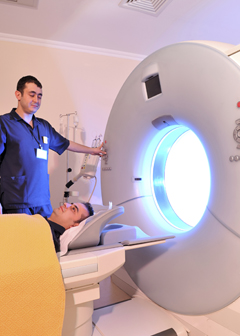Summary
Please enable javascript to play this video.
| Quick Facts: Radiologic and MRI Technologists | |
|---|---|
|
$78,980 per year
$37.97 per hour |
|
| Associate's degree | |
| See How to Become One | |
| None | |
| 272,000 | |
| 5% (Faster than average) | |
| 12,900 | |
What Radiologic and MRI Technologists Do
Radiologic technologists perform diagnostic imaging examinations on patients. MRI technologists operate magnetic resonance imaging (MRI) scanners to create diagnostic images.
Work Environment
Radiologic and MRI technologists work in healthcare facilities, and more than half work in hospitals. Most radiologic and MRI technologists work full time.
How to Become a Radiologic or MRI Technologist
Radiologic technologists and MRI technologists typically need an associate’s degree. MRI technologists also typically need several years of related work experience. Most states require radiologic technologists to be licensed or certified, but few states require licensure for MRI technologists. Regardless of state requirements, employers typically require or prefer to hire technologists who are certified.
Pay
The median annual wage for magnetic resonance imaging technologists was $88,180 in May 2024.
The median annual wage for radiologic technologists and technicians was $77,660 in May 2024.
Job Outlook
Overall employment of radiologic and MRI technologists is projected to grow 5 percent from 2024 to 2034, faster than the average for all occupations.
About 15,400 openings for radiologic and MRI technologists are projected each year, on average, over the decade. Many of those openings are expected to result from the need to replace workers who transfer to different occupations or exit the labor force, such as to retire.
State & Area Data
Explore resources for employment and wages by state and area for radiologic and MRI technologists.
Similar Occupations
Compare the job duties, education, job growth, and pay of radiologic and MRI technologists with similar occupations.
More Information, Including Links to O*NET
Learn more about radiologic and MRI technologists by visiting additional resources, including O*NET, a source on key characteristics of workers and occupations.
 United States Department of Labor
United States Department of Labor








